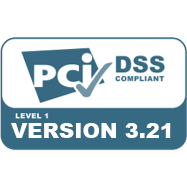Payments in your industry
At the beginning of building your business, you’re going to be scouring the world finding out how you fit. Who’s who in the zoo; who’s doing what; how they are doing it. You’ll be meeting new people, and looking at the competition & introducing yourself to customers. It’s easy to get swept up with exciting details.
While you’re looking, here’s our PSA:

Think payments first, then think about the rest.
In these initial phases of your business, there are things to consider that can have far-reaching repercussions to one of the most fundamental areas of your new business. Thinking about payments first lets your new business be flexible and smarter with one of its most essential aspects: money.
Welcome to the third part of our 5 part series, all about thinking payment first:
- Part I: Think payments first
- Part II: Planning payments first
- Part III: Payments in your industry
- Part IV: The not so fun stuff – Rules, Regulation & Compliance
- Part V: Be proactive with your payments
How do your customers expect to pay?
If you are in a competitive environment, here are some key areas to look at when scoping out their carts and payment flows. Some of these options might be more than nice, they may be expected by your future customers.
- Credit Cards – What cards are accepted. Not all cards are created equal, and each has its own processes. If everyone is taking Amex, there might be a reason for that.
- Payment Services – Apple Pay, Google Wallet, Samsung Pay, PayPal, the list goes on and on. These can add technical complexity when getting off the ground.
- Alternative Payment Methods – Yes, there are so many options and wallets coming and going it can be hard to manage, make note of the offerings with different wallet options, Buy Now Pay Later (BNPL) micro-credit or, NFT’s / Cryptocurrency.
- International Offerings – If you plan on going international, don’t just use the default country and currency. Mix up the cart to see what international options. Some countries have direct debit, or other choices.
Ultimately, you may want to support as many payment options as possible to ensure you make the sale, which adds costs and typically increases bookkeeping and accounting costs in addition to the payment provider costs.
What else do your customers expect to pay for?
Let’s look at other payments related expectations your customers or industry might have: delivery options, purchase insurance, service fees. These may be internal or outsourced offerings.
If you’re outsourcing, these services are sometimes overlooked as suppliers too. They need their funds, their %’s of the sale. Just like we discussed last time, the speed at which they want their payments can make a difference in the bottom line.
Are any service fees returned at full cost? What’s the process and the payment fees on the return? Is the cost to refund greater than the fee itself?
For each expectation when looking at payments first, ask these questions: what is the payment process, who pays, when do you pay, what are your fees, and what happens when something goes wrong?
What do your customers expect after they pay?
The sale isn’t done until it’s done. After the initial payment – it’s not over. There will most definitely be residual payment needs & fees afterward. Additionally in some industries, your customers might have additional expectations of safeguards and services like moneyback guarantees, purchase cancellation windows, or the ease in which they can cancel the transaction with their credit card provider.
Things will go wrong: packages will break, expectations might not be met, customers will dispute the charge with their credit card provider. Remember, customers sometimes will want their money back.
We’ll talk about this in more depth in our next installment, but for now, what you should keep in mind is when it does, you need to move money again. There might be a series of steps, vendors & suppliers that you are dependent on. You might need to foot the bill ahead of time and hope everyone follows through on time.
Wait… Service Fees?
Yes. Dreaded service fees. No one “wants” to add these.
Remember when you used to buy concert tickets or book a hotel? Remember all the fees that get tacked on in the cart as you purchased? Some of this may have more logistical reasons as you look at the payments and industry expectations. We’re not saying we agree with the process, but a competitive market might dictate processes you were previously unaware of.
Maybe, when you think payments first, your business can then lead the pack by coming up with a new, and disruptive strategy for payments in your industry.
More questions?
We’re hoping you do because that’s what this process is all about.
It takes practice to think payments first. The Peloton team has been putting payments first for more than a decade. To find out how our Peloton Portal and our team can help, visit paywithpeloton.ca



